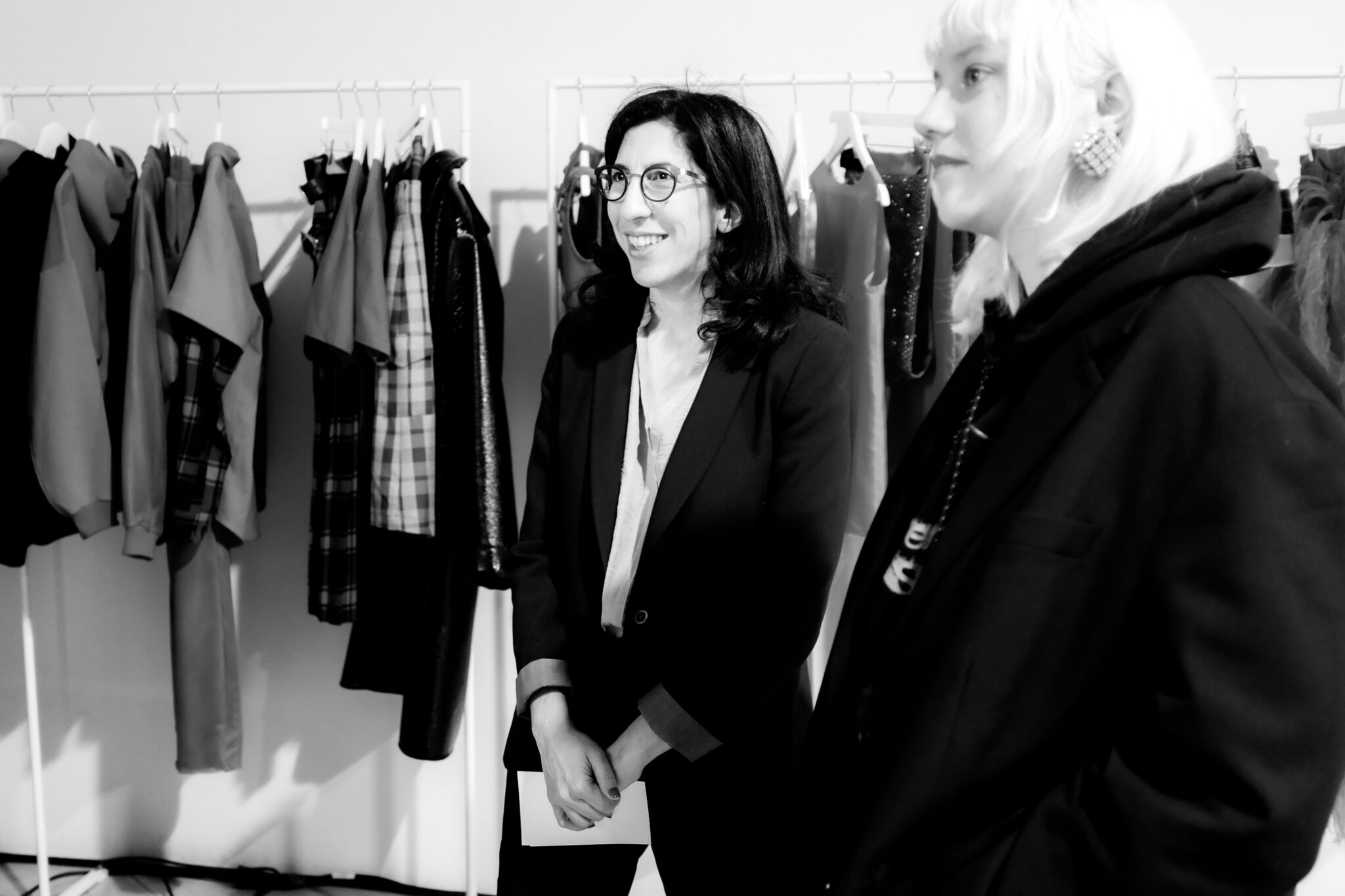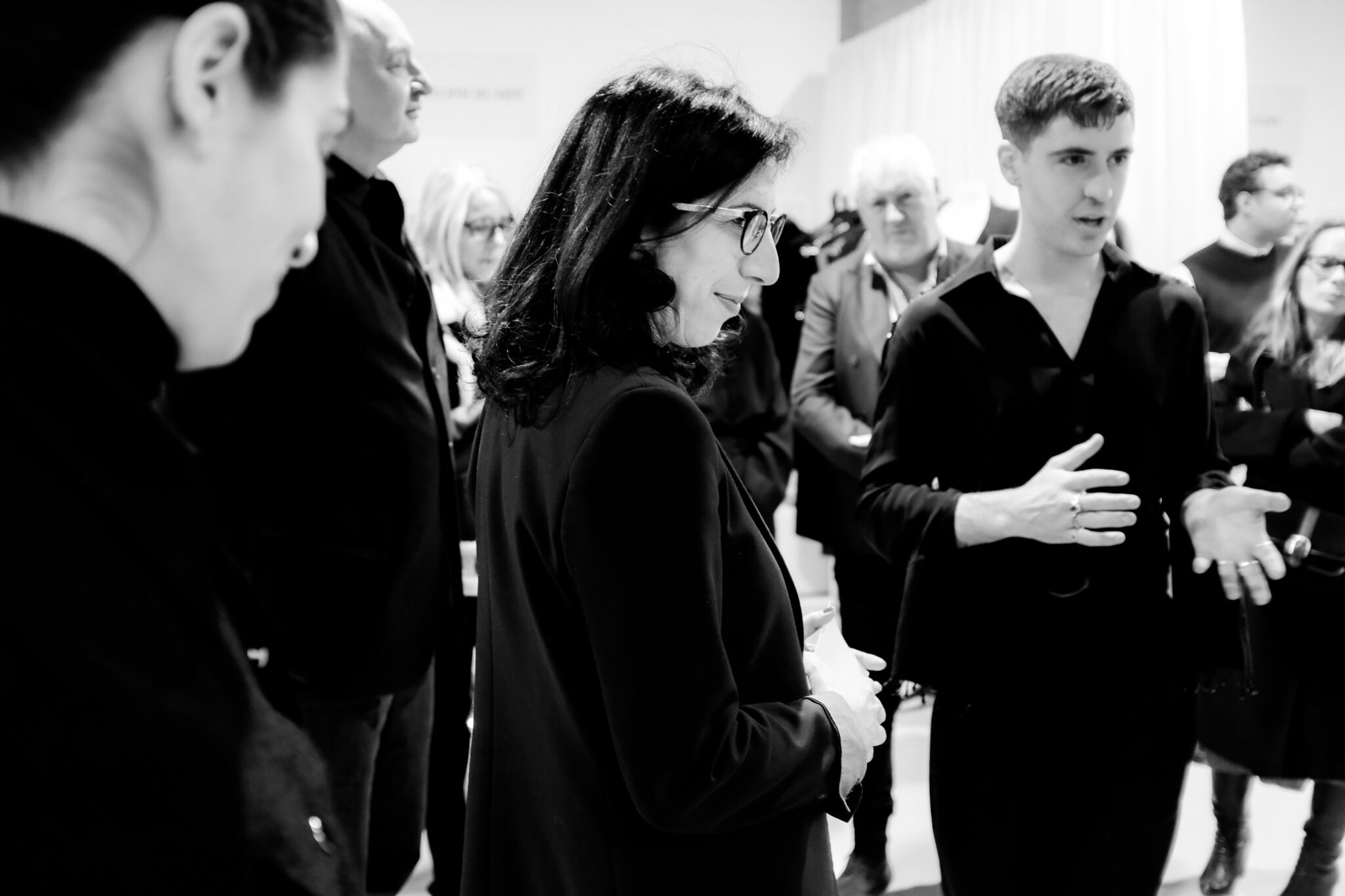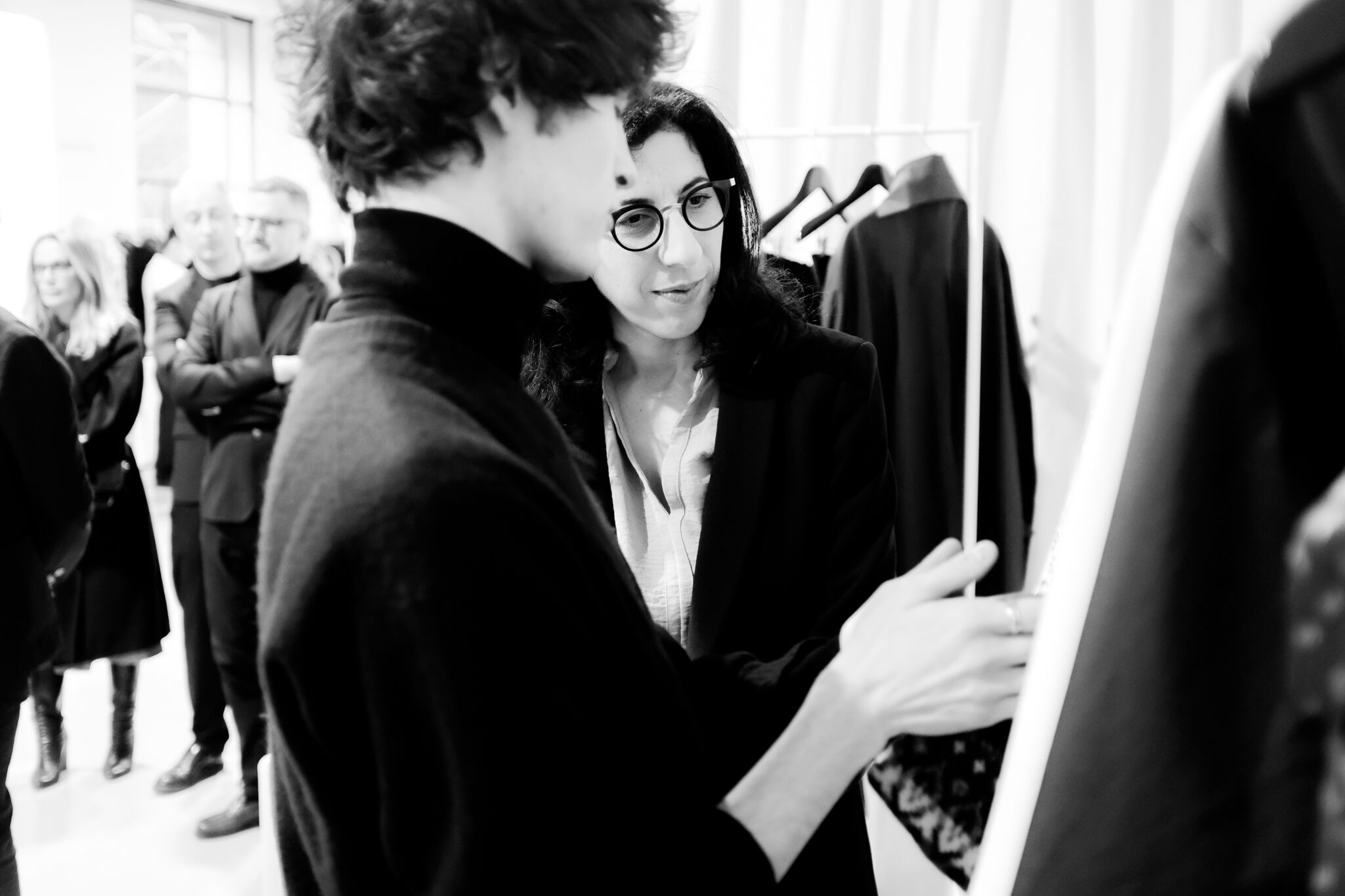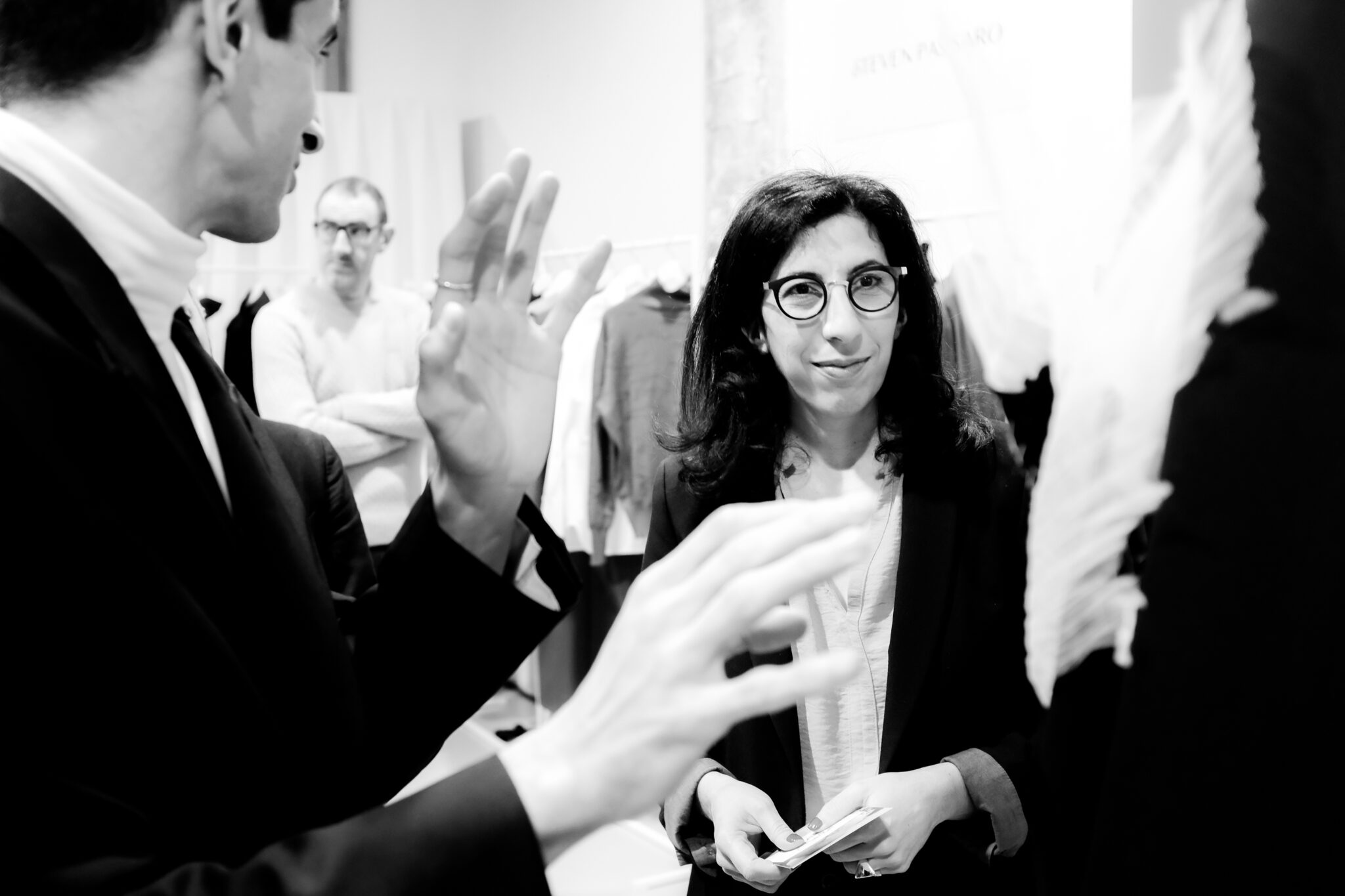A Conversation on Fashion with the French Minister of Culture
The opening of Paris Fashion Week® was highlighted on Tuesday, January 17th by a visit from the Minister of Culture, Rima Abdul Malak, to the Sphère Showroom at the Palais de Tokyo. This moment of exchange and sharing with young designers affirms the support of the Ministry of Culture towards emerging creation. This season, eight brands are present in the Sphère PFW® Showroom created by the Fédération de la Haute Couture et de la Mode with the support of LE DEFI and L’Oréal Paris. After the Minister met with each of the designers, she sat down with journalists. Below, some excerpts from their conversation.

Can you explain the role of the government in promoting fashion? What are you doing to uphold fashion?
These are two legs that walk together: the public leg, and the private leg. The public leg is used to support an ecosystem of schools. There is the State but also the town halls, for example the Maire de Paris supports the École Duperré. It’s to support cultural places, like the Palais de Tokyo, like the Musée des Arts Décoratifs, which are also spaces to create these connections between fashion and all the other art forms. Fashion is an art that has always been linked to music, literature, cinema, dance and many other arts. It can be fully experienced in a place like the Palais de Tokyo and that is very important.
We support festivals, for example the Hyères Festival. We have seen some of the artists here and we can tell how it propels them for the rest of their career. I am also launching a new call for projects for France 2030, our investment plan intended to structure and develop the creative industries, including of course fashion, and the aim is also to support the trades, the art trades, the fashion trades in all the regions of France, not only in Paris. We have seen some people setting up in Nantes, working with local manufacturers in other territories and not only in Paris. This call for projects will enable the development of territorial clusters for the design and fashion professions. These fields are also very connected to each other, developing employment in the regions, developing short circuit circuits in a sustainable development spirit, developing training, talents, trades to transmit all this savoir faire.
We also support the ANDAM Prize, which the Minister of Culture awards every year at the Palais Royal, and I am very attached to it. This is a whole ecosystem that the State can support. Our challenge is really to look ahead, and this is why we have the France 2030 plan to encourage new vocations, train talent, and make our action more expansive [across the country]. While the whole world comes to present its collections here in Paris… fashion is everywhere in France. Manufacturers are everywhere in the country; designers are everywhere in the country; festivals are everywhere in the country. And we must carry forth this territorial ambition.

How is the young creation holding up?
Yes, I think they need it with the pandemic and all the crises that followed – the climate crisis, geopolitical crises – all of which impact creation. [Crises] are also moments of reinvention and innovation. In my opinion, what stands out two and a half years after this difficult period are the artworks that push the boundaries of what we call fashion even further, and that is pleasing.
What stood out to you in the presentations you’ve just seen?
What I noticed was the very interesting work on materials, the search for more eco-responsible materials, replacing leather with coated cotton, it seems… What I found very interesting was that this is a menswear fashion week, which asks the question: What is masculine? Clothes that can be worn by people who feel like men, who feel like women, who feel somewhere in between. There is this freedom of perception of what gender is. This freedom is not in new labels or new ways of naming things. We see how fashion remains the ultimate art of freedom.

You mention freedom a lot and clothing is highly present in the public sphere, but curiously, fashion is somewhat side-lined by French universities and schools, in particular. What are you going to do, perhaps working with education, so that fashion – which is the art of difference, of freedom – is protected?
We can feel it, the young generation – but at all ages – is seizing fashion every day. Whether it’s on TikTok or at school, from the crop top to the debate on uniforms, this question affects our daily lives. There is both a need for national cohesion in these moments of crisis and a need to let everyone express his or her personality, which evolves with time. We change with time, and fashion changes with us. It is this right balance that we must find in France, between a pacification of the debates and the respect of the freedom of each individual.
Paris Fashion Week attracts many international designers. Why do you think Paris remains the ultimate designer dream?
Thankfully! We are very proud of it. It’s the history of France, of this sector that has been able to propel the power of imagination worldwide. I think that Paris is the capital of creation for artists. Historically, artists have come from all over the world to find freedom. The more we defend it, the more we continue to carry it forward with innovative companies and creators, the more we will remain so. I am Franco-Lebanese and there are designers in my family, including Georges Chakra who will soon be organising a show at the Palais de Tokyo. It’s very hard in these countries that are in permanent crisis, and we have to tell them that France is right there, that they are at home here, in a country that will always defend their creative freedom. We have welcomed Ukrainian artists everywhere in France, students who are in our art schools. This ability of France to be a welcoming place for artists who are threatened in their country or who cannot work in their country for economic or geopolitical reasons – we must continue to carry this flame.
You left Lebanon amidst difficult conditions. What memories of elegance did you leave behind?
Elegance lies in the poetry of everyday life. For me, it’s the elegance of my grandmother who took half an hour to do her hair in the morning, and dressed with great attention to every detail, and we would go down to the basement, into the shelter because there were bomb attacks. This elegance means dignity. Even though we [were] in the middle of a war, that is elegance.
It seems the Macron government has given more importance to fashion than before. Why is this?
When he was Minister of the Economy, he was already very persuaded, and he knows the economic power that it represents – the strength of exports, the strength in terms of jobs, but also the strength of imagination. And we need stories, dreams, magic. Fashion carries all that.
In addition, we hear all these criticisms about luxury, its prices. But we are talking about manufacturing in France. Everything we see here, and all these companies are made in France. We’ve seen designers who don’t use any plastic or polluting materials, who work to revitalise employment in small towns in France. That’s what the fashion industry is all about: employment, attractiveness for the regions, exporting talent, the power of imagination. I think the President has understood this very well. The First Lady [Brigitte Macron] is also very aware of fashion. These dinners at the Elysée, we were lucky enough to organise, notably with Pascal Morand – the second dinner of creation was just before the shutdown for Covid. It was an extraordinary moment to bring together international designers in a place as symbolic as the Elysée.

How can young designers break through when the major groups are running the show?
We have the ANDAM Prize that I mentioned, and a call for projects to support fashion players, particularly in their digital and ecological transition, so we have budgets. We can provide them with support. A collection can be very successful and the next one can be not so popular. This is part of the uncertainties of creation, and we have to be there to support them. We must help them to take risks.
This interview has been edited for length and clarity.
Photo credits: François Goizé



